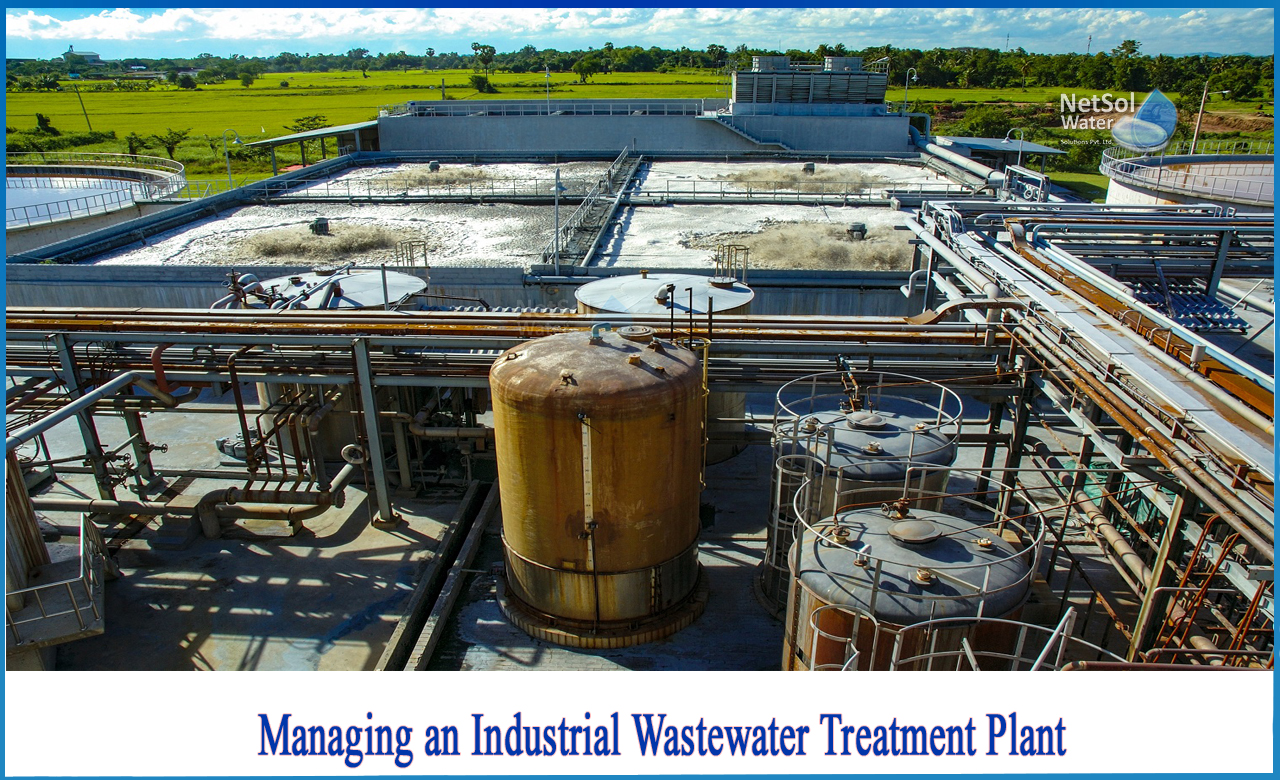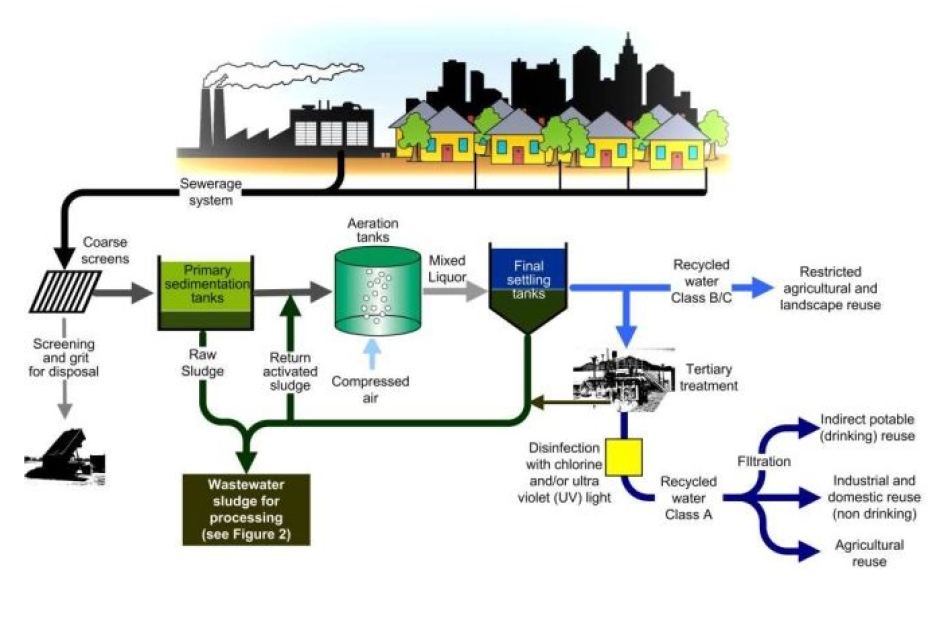Key Techniques in Industrial Waste Water Treatment Procedures
The therapy of industrial wastewater is a critical element of ecological management, entailing a series of strategies developed to alleviate the influence of contaminants. From the essential physical approaches that divide solids to the advanced chemical and organic processes that target particular pollutants, each method plays a crucial role in attaining water top quality standards. Moreover, developments in modern technologies such as membrane layer purification and progressed oxidation processes supply cutting-edge options for improving treatment efficacy. Comprehending exactly how these approaches interconnect and their effects for sustainability increases essential questions concerning the future of wastewater management in industry.
Physical Therapy Techniques
How effectively can physical treatment approaches deal with the intricacies of industrial wastewater? Physical treatment approaches play a critical duty in the initial phases of wastewater management, concentrating mostly on the elimination of solids and big particulates. Methods such as filtering, flotation, and sedimentation are necessary for minimizing the concentration of put on hold solids, thereby enhancing the performance of subsequent treatment procedures.
Sedimentation includes the gravitational settling of solids, enabling for the separation of much heavier materials from the wastewater. This approach is specifically efficient in clarifying water prior to organic or chemical therapies.
Furthermore, flotation approaches, which use air bubbles to raise suspended solids to the surface for elimination, are efficient in dealing with wastewater with high concentrations of fats, oils, and oils. Generally, physical therapy methods work as an important primary step in the thorough administration of commercial wastewater, guaranteeing that the lots on succeeding therapy stages is lessened and improving overall therapy efficacy.
Chemical Treatment Strategies
While physical therapy methods lay the foundation for effective wastewater management, chemical therapy techniques are necessary for attending to the a lot more complicated impurities commonly found in commercial effluents. These methods use different chemical representatives to speed up, neutralize, or oxidize unsafe compounds, guaranteeing a more detailed removal of toxins.
One common strategy is coagulation and flocculation, where chemical coagulants such as aluminum sulfate or ferric chloride are included in promote the aggregation of put on hold particles. This procedure boosts solid-liquid separation, lowering turbidity and improving water top quality. Additionally, neutralization processes are utilized to adjust the pH of wastewater, making use of acids or bases to reduce the effects of acidic or alkaline streams, specifically.
Oxidation-reduction reactions play a vital role in derogatory organic contaminants and pathogens. Chemical oxidants like hydrogen, chlorine, or ozone peroxide are utilized to break down intricate natural compounds, making them less dangerous or more biodegradable. In addition, advanced oxidation processes (AOPs) combine several oxidation techniques to enhance toxin elimination efficiency.
Biological Treatment Processes
The effectiveness of wastewater treatment is significantly enhanced by organic therapy procedures, which harness the natural metabolic tasks of bacteria to break down organic matter and eliminate contaminants. Industrial Waste Water Treatment. These processes mainly include cardio and anaerobic food digestion, each customized for certain types of wastewater
Cardio therapy procedures use oxygen to sustain microbial development, advertising the malfunction of natural useful reference toxins right into carbon dioxide and water. Common techniques consist of triggered sludge systems, where oygenation storage tanks help with the blending of wastewater with microorganisms, and trickling filters, which urge biofilm growth on media surfaces.
On the other hand, anaerobic treatment processes happen in the absence of oxygen, making use of anaerobic microorganisms to break down organic issue, leading to biogas production, a sustainable energy source. Anaerobic digesters are often used in industrial setups for this objective, successfully decreasing the quantity of sludge while producing useful biogas.
The choice of a biological therapy method depends upon wastewater features, treatment goals, and governing standards. The integration of biological procedures in wastewater treatment not just boosts toxin removal performance but additionally promotes sustainability by decreasing chemical use and supporting resource recovery.
Advanced Oxidation Processes

Typical AOP techniques include site Fenton's ozonation, reagent, and photocatalysis. Fenton's reagent, a combination of hydrogen peroxide and ferrous iron, militarizes the formation of hydroxyl radicals, making it efficient for treating wastewater including phenolic substances and other stubborn substances. Ozonation utilizes ozone as a powerful oxidant, efficient in weakening a vast array of natural toxins while concurrently disinfecting the effluent. Photocatalysis utilizes light-activated drivers, such as titanium dioxide, to boost oxidation reactions and remove contaminants.
AOPs supply numerous advantages, including reduced sludge production and the capacity to treat wastewater with high concentrations of natural pollutants. The execution of AOPs calls for mindful factor to consider of functional parameters and cost-effectiveness, making sure that these innovative strategies are suitably incorporated right into existing wastewater treatment systems.
Membrane Filtration Technologies

Microfiltration works for removing put on hold solids and microorganisms, while ultrafiltration targets smaller natural molecules and viruses. Nanofiltration links the space between ultrafiltration and turn around osmosis, efficiently eliminating organic compounds and divalent ions. Reverse osmosis gives the highest level of purification, utilized mostly for desalination and eliminating mono-valent ions.
Membrane innovations provide countless advantages, consisting of low energy consumption compared to conventional therapy techniques, modular style for scalability, and the capacity for water healing and reuse. Nevertheless, challenges such as membrane fouling and the requirement for regular maintenance should be addressed to make sure system efficiency. In general, membrane filtering technologies represent resource an important component of modern commercial wastewater treatment strategies, advertising sustainability and source conservation in water management.
Conclusion
In verdict, industrial wastewater therapy employs a diverse array of strategies, consisting of physical, chemical, organic, and advanced methods. Proceeded advancements in these methods will certainly even more improve the performance and effectiveness of wastewater treatment procedures in commercial settings.
The therapy of industrial wastewater is an essential aspect of environmental monitoring, involving a range of techniques designed to alleviate the influence of contaminants.Just how properly can physical therapy methods deal with the intricacies of commercial wastewater?Advanced oxidation procedures (AOPs) represent a sophisticated approach in industrial wastewater treatment, developed to successfully deteriorate organic contaminants that are usually immune to standard therapy methods (Industrial Waste Water Treatment).In conclusion, industrial wastewater treatment employs a diverse array of methods, consisting of physical, chemical, biological, and advanced approaches. Proceeded developments in these approaches will certainly further improve the effectiveness and effectiveness of wastewater treatment processes in industrial setups